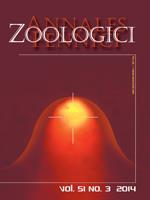During the period 2000–2012 we witnessed a general increase in the Baltic grey seal (Halichoerus grypus) population size. Population growth has, however, ceased in the northern sea areas. The accompanying changes to age structure during this time suggest a reduced female pregnancy rate. In this study, we used hunted individuals to examine the ovulation and pregnancy rates of seals from different age classes and years. We examined the presence of corpus luteum, corpus albicans and placental scars from seals killed before the implantation period and fetuses after the implantation period. The pregnancy rate derived from the presence of corpus albicans or placental scars in the pre-implantation period was similar to that based on fetuses. Thirty-three percent of females ovulated at the age of 3 years, 81% at the age of 4 years and 99% thereafter. The pregnancy rate was lower among 4–5-year-old females (0.54–0.56) than among 6–24-year-old females (0.77–0.86), being highest in 7–11-year-old females. The pregnancy rate of 6–24-year-old females decreased from 0.89 in 2000–2004 to 0.66 in 2005–2011 and correlated negatively with population size. The decreased pregnancy rate suggests that grey seal numbers in the northern part of the Baltic Sea may be today close to the carrying capacity of the environment.
How to translate text using browser tools
30 June 2014
Decline in the Pregnancy Rate of Baltic Grey Seal Females during the 2000s
Kaarina Kauhala,
Markus P. Ahola,
Mervi Kunnasranta
ACCESS THE FULL ARTICLE

Annales Zoologici Fennici
Vol. 51 • No. 3
June 2014
Vol. 51 • No. 3
June 2014




